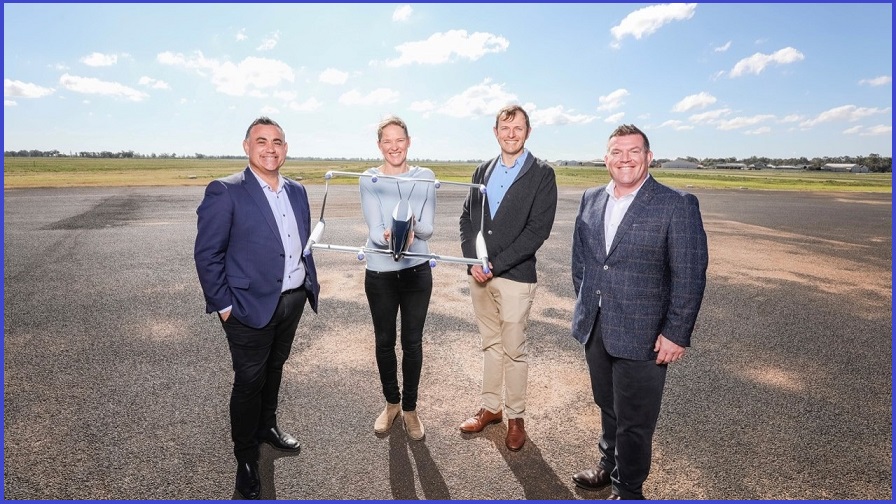They’re a long way from the levitating classic models that went airborne in Harry Potter and Back to the Future, but new investment in an Australian driverless flying car has revved up excitement about a technology that backers believe could one day become the Uber of the Outback.
An ongoing regional development project by Narromine Shire Council – a large rural council of just 6,400 residents – has driven development around the Narromine Aerodrome, a former RAAF flying school that was revitalised in 2015 with a 25-year strategic plan that includes a $2.5m precinct of dedicated hangars, residential land, and 22 blocks of leasable commercial space.
That development has been supported by a $750,000 grant from the NSW Government Growing Local Economies fund.
Its anchor tenant, announced by NSW deputy premier John Barilaro and local member Dugald Saunders, is AMSL Aero – a developer of flying cars that will be operational within the industrial park by month’s end thanks to a $950,000 grant from the NSW Government’s Regional Investment Attraction Fund.
Australian manufacturer AMSL Aero, which will develop and test its Vertiia ‘electric vertical take-off and landing aircraft’ (eVTOL) at the site, claims the battery-powered units will take off and land like a helicopter from ‘vertiports’ or helipads, then fly at up to 300km/h.
“We are excited by the opportunity to use this grant to help us prepare for our upcoming launch and build essential testing facilities,” said CEO Andrew Moore, a UNSW-trained aeronautical engineer and Australian Navy engineer, who founded the company with lawyer and former Google executive Siobhan Lyndon.
Vertiia’s realisation fulfils their vision “to build a safe aircraft that will ease the burden of traffic congestion on people’s lives, will provide greater choice over where people can live and visit, whilst also respecting our environment”.
Continuing a long tradition
AMSL Aero’s commitment to the Narromine Aerodrome reflects the site’s long history in Australian aviation, where its aviation museum chronicles everything from Qantas pilot training to ‘barnstorming’ aerobatics and aviation lovers converging on the site to fly classic planes and replicas.
With ample room to move on the ground and in the Outback skies, the site may soon add a fillip as the base for Australia’s flying cars industry, Barilaro said.
“Imagine the convenience of having a flying car land in your suburb when you need to travel to a regional destination that is not serviced by an airport,” he said.
“It sounds like science fiction but the reality is a future where this is possible, practical and affordable is not that far away.”
With the lease secured, AMSL Aero will work with Narromine Shire Council to build its testing facility throughout the year, with test flights of the Vertiia – which was demonstrated as a “flight-capable scale model” at the launch – by next year.
The race to the skies
AMSL Aero isn’t the first company to push for flying cars in Australia, however.
Last year, Uber – which already offers ride sharing via helicopter in New York City – chose Melbourne as its only non-US city for tests of its Uber Air flying taxi service, which will use a fleet of Hyundai-built eVOTL aircraft and plans to be flying the devices by 2023.
Test flights of the “aerial ridesharing” services were slated to begin this year, ferrying passengers between the CBD and airport, among other destinations.
Flying cars were once passion projects of laterally-thinking engineers but promises of a widespread ‘flying car’ industry have led to a flurry of investment, with a 60-storey Miami residential tower one of many developments to install rooftop ‘vertiports’ designed to accommodate the vehicles.
NEC last year demonstrated its flying-car prototype, while aeronautical giants including Boeing and the US Air Force have all joined a flurry of startups racing to get commuter vehicles into the air.
But technological issues abound, with a “bullish” Uber Elevate division head Eric Allison warning of flagging technological limitations on battery life that make current solutions “barely good enough to make [eVOTLs] feasible” under current models.










